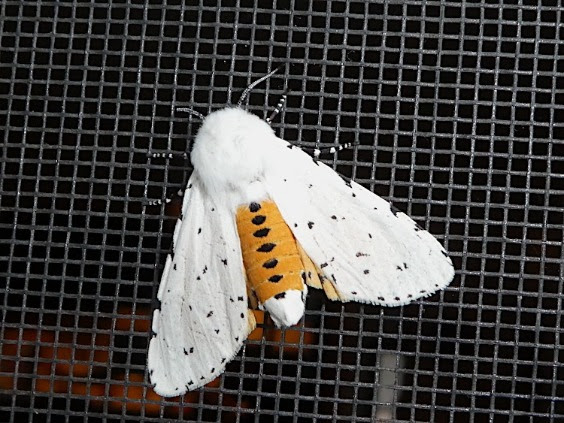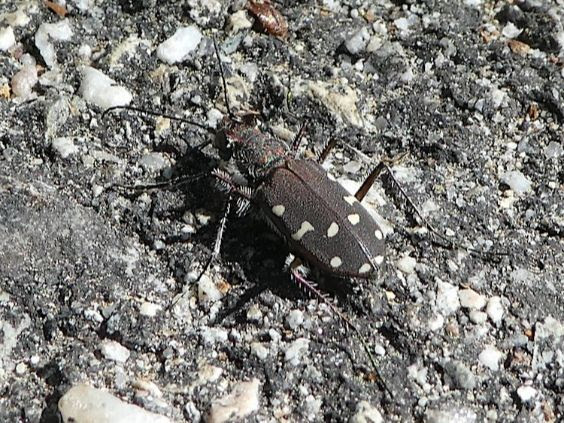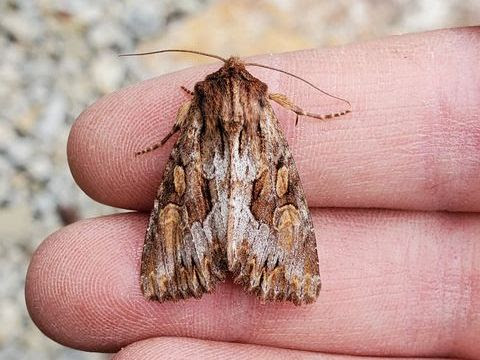At first glance, these extremely capable (and seemingly always hungry) predators look like a medium sized bumblebee. Their “bearded” face is one way to recognize these insects as robber flies. […]
Read MoreWhat’s Buzzin’
What can you see around Western Montana right now?
Yellow Velvet Beetle (Lepturobosca chrysocoma)
These golden, fuzzy-looking beetles can be found from Canada to Northern Mexico, mainly in the western part of North America. They range in size between 1 to 2 centimeters. Adults […]
Read MoreA Flower Longhorn (Pseudogaurotina cressoni)
Karen thought this beetle looked familiar—it’s the “cover model” on the front of the Pacific Northwest Insects book. The shine of the metallic green wing covers was muted by an overcast sky, […]
Read MoreA Flat-faced Longhorn Beetle (Hyperplatys aspersa)
This beetle is at most 1 cm long, but sure to catch your eye. Long-horned beetles (family Cerambycidae) sport antennae typically more than half as long as their bodies (longer […]
Read MoreAphid Mummy
What looks like an aphid that’s ready to explode is actually what’s left over after being parasitized by a Braconid wasp (family Braconidae, subfamily Aphidiinae). Braconid wasps are tiny, only about 1/8 […]
Read MoreWestern Damsel Bug (Nabis alternatus)
Damsel bugs are often mistaken for another type of true bug, assassin bugs (family Reduviidae). One way to tell them apart is to focus on their “beaks”. Damselbugs have a four-segmented […]
Read MoreA Green Lacewing (Chrysopa coloradensis)
While these beautiful and delicate looking insects are harmless to humans, they are very capable predators that always seem to be hungry. And since they tend to feed on other […]
Read MoreSalt Marsh Moth (Estigmene acrea)
The name of this elegant moth reflects its frequency in coastal salt marshes (tidal marshes) along the Pacific, Atlantic, and Gulf Coasts. But really, they can be found in any […]
Read MoreWestern Tiger Beetle (Cicindela oregona oregona)
The western tiger is slightly smaller than our other tiger beetles in Montana (only 11 – 13 mm). Their color can vary from brown, green, purple to black. They are […]
Read MorePronounced-antenna Brocade (Apamea antennata)
This richly colored and subtly patterned moth flies from late spring to summer in a variety of forested habitats: dry, open ponderosa pine forests to wetter Douglas fir or subalpine fir […]
Read More








